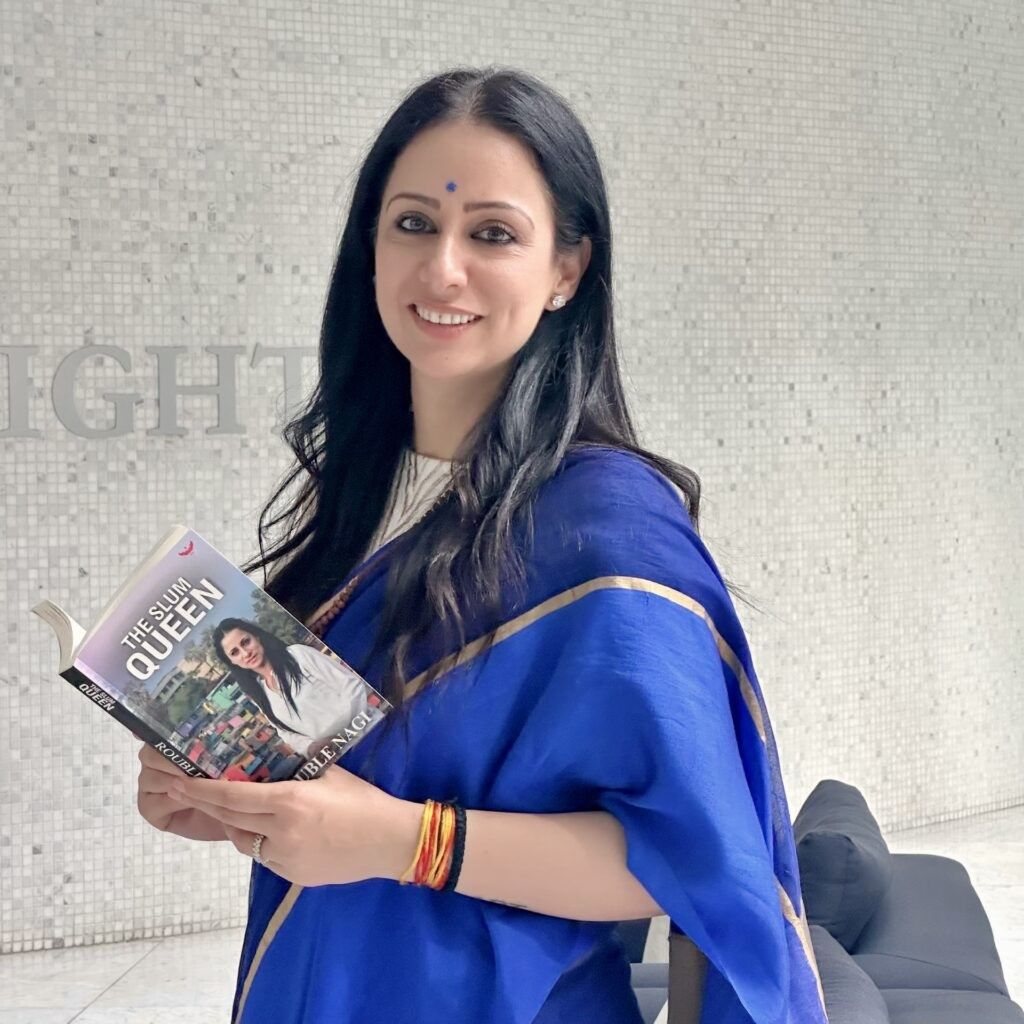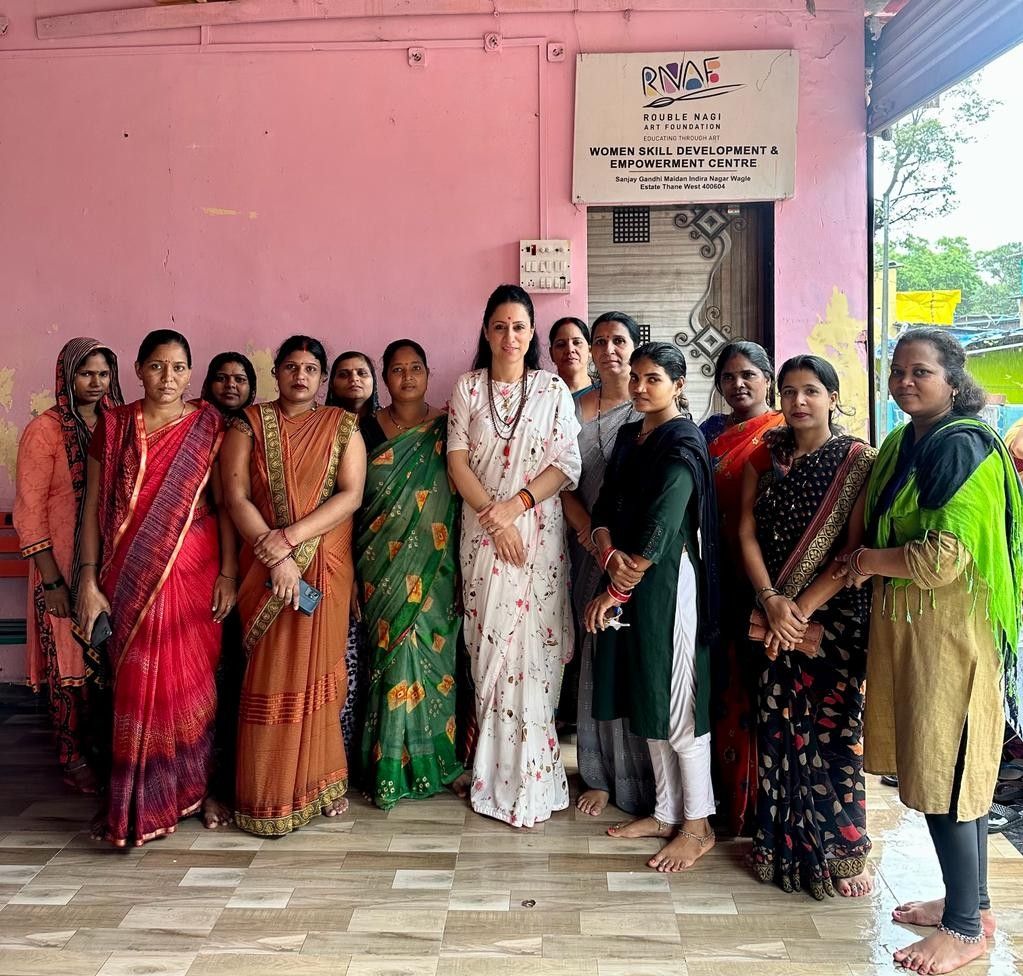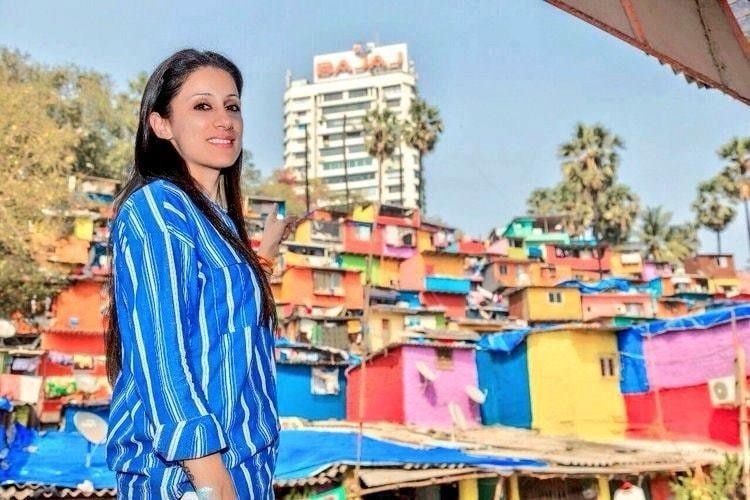BRILLIANTLY balancing acclaimed work in multiple mediums, from sculptures to paintings, with philanthropy has turned Rouble Nagi into arguably the most important Indian artist of this generation.
The combination of creativity and giving back to society has transformed the lives of thousands in deprived areas with in – spiring projects, including turning slums into eye-catching works of art.
The big hearted artist has provided education and opportunities for so many underprivileged individuals that she has been nicknamed the Slum Queen, which is also the title of an inspiring book documenting her brilliant work. She has also helped turn impoverished women and girls into entrepreneurs, with a thriving fashion business that feeds money back into the community.
By using her platform as a revered artist who has done hundreds of exhibitions, she has raised awareness of many social causes and become a driving force for positive change.
In an international Women’s Day special, Eastern Eye caught up with the inspiring artist to discuss her creative journey and important humanitarian work that is empowering so many.
How do you reflect on your journey as a leading artist?
It’s true, I think, that to lean back and reflect on your exploration from time to time allows you to get a clearer insight into what brought you there. It has been over 20 years of carving, tapping and chiselling – creating murals, sculptures and paintings – which I enjoy. My endeavour has always been to make artwork that appeals to the five senses.
Tell us more about that creative process.
The concept has always been to create an artwork that tran – scends the material, embodying a consciousness akin to a meditative state where ordinary reality is transcended. Spirituality is important and my work reflects it.
My inspiration to create something beautiful comes from life – you learn to listen, observe and create as an artist.

Which of your many projects have been closest to your heart?
All my projects are dear to me. Can you really choose between your children and say who is closest to you? It’s the same for most artists. All my creations are a part of me. However, if asked which was the most fun to create, I would say it’s my ‘Shiva and Shakti’ wall mural. I was chanting all the time while creating it and can feel it – a deeply spiritual strand, one that breathed energy and life into static materials. It is a powerful creation.
How did you make that transition from art to inspiring philanthropic work?
I have written about this in my book, The Slum Queen, a story with reflections on my spirituality, social work and artistry. How it has always been a big part of my life and how, eventually, it became my full-time job. Art has the power to heal, unite and make this world a better place. It is not a transition; it’s an amalgamation of art and humanitarian work.
What inspired you to start transforming slums?
Misaal Mumbai was India’s first holistic slum transformation project through art in Mumbai, which has a large slum population. The concept was to initiate a dialogue between people from different social and economic backgrounds. The slum dwellings served as a large canvas and with the help of local peope we transformed the slum, by not only creating artworks, but also addressing issues such as sanitation, hygiene, education and empowerment. Later, this developed into Misaal India. The model was replicated throughout the country in villages as well as slums.
How much do locals get involved when you do an art project like a slum transformation?
The Rouble Nagi Art Foundation is an NGO working in slums and rural villages in India. We are a volunteer-based organisation. We mobilise the residents of the slums we work in as volunteers, who not only help in creating artwork, but are also trained to teach waste segregation to others living in the area, along with women who are trained to become primary teachers. Housewives and young women have become entrepreneurs through skill training initiatives implemented in every slum and village where we are active.
You have empowered women in slums to become entrepreneurs with a business model where they produce eye-catching fashion creations. What led to that?
Our skills training programme for employability is used as an agent of change in promoting women’s employment and independence. The Skill Centre, set up by the Rouble Nagi Art Foundation, is about accessing skills and techniques that provide employment for women. This is done keeping in mind the existing knowledge and skill set each woman already has. With a little guidance, mentoring and skill shaping, we aim to encourage women entrepreneurs.

Has your model for creating women entrepreneurs really caught on?
Clusters have been established in rural Kashmir, Rajasthan, slums in Mumbai and villages around Delhi, among others, to empower women through skills-based learning programmes. These centres have created successful entrepreneurs whose works are being sold through Studio Saksham.
The garments these talented women create are absolutely stunning…
Studio Saksham is India’s first village-based e-commerce store. The initiative plays a key role in enabling women from rural India, who are now confident of their skills and have become financially independent. The aim is to make women ‘Saksham’, which is self-reliant and financially independent. Kashmiri shawls, rugs, phirans, kaftans, scarves, saris, kurtas, cushion covers and many other products are available for purchase online.
What is your priority now – philanthropy or art? Or, do they now both complement each other?
My art as well as my humanitarian work are interconnected. There is perfect unity between the two, which makes it easy for me. Every work created should be an extension of you and an enduring expression of the divine spirit. Art must be used for the betterment of society and this can only be achieved when you combine the two.
Which other social causes are really close to your heart?
The Rouble Nagi Art Foundation primarily works with women and children, imparting low-cost education solutions in slums and villages across India. Education is essential for the holistic development of children and it plays a critical role in their physical, mental, emotional and social development. We help children become independent, develop a sense of responsibility and become productive members of society.
Do you think that art can create social change?
Art can make a significant impact on society. We have been dong it since we launched Misaal India six years ago. Artistic projects like Misaal Mumbai/India have the unique capacity to empower communities to envision a world different from their present reality. The creative process can be particularly useful in the context of poverty and hardship, where it can be difficult for people to think beyond their immediate opportunities and constraints and imagine alternative futures.
Your combination of creativity and humanitarian work is clearly working…
Thank you. We have successfully addressed social problems such as inequality, violence, environmental degradation, education and women’s empowerment in local communities, while promoting local cultures and changing mindsets to achieve a positive goal.
Your exceptional book, The Slum Queen, documents your work beautifully. What inspired you to write it?
While working on the ground, I keep a sketch diary. I don’t make notes, but I sketch my experiences. Misaal Mumbai was actually a series of sketches, which were all about my experiences and interactions with people living in the slums. Daily struggles and the role of faith in the lives of people are things that cannot be put into words. Those sketches were the starting point. The title, The Slum Queen, was suggested by the children of the slum. I have also dedicated the book to them.
Tell us a little more about the book.
The book is about the project, Misaal Mumbai, and about my experiences while working in the slums and villages in India. It’s also an insight into the problems faced by people living in the slums and the solutions to overcome them through simple interventions.
With all the humanitarian and social development work you do, how do you get time to create your art?
As an artist, I always wanted to embrace and integrate my role of a social worker. As a philanthropist, I am not deprived of art. In fact, I am nourished creatively by this rich life, where I have the best of both worlds. As they are connected, I have plenty of time to do both.

Tell us about your current art projects?
My projects are mostly public art commissions and large outdoor installations. I recently completed artwork, murals and sculptures for the Srisailam Mandir guesthouse in Andhra Pradesh, south India.
Today, what inspires you creatively?
The inspiration to create something beautiful comes from life, my experiences and my journey.
You have become a hero to so many, but who is your hero?
Every daughter’s hero is her father; mine is no different. He is an army officer and someone who helped me grow into what I have become today.
What advice would you give aspiring artists?
Live by your passion; find time to create every day. Believe in divine timing. Be kind.
According to you, what makes for great art?
Freedom and the liberty to create from within are the basis of great art.
